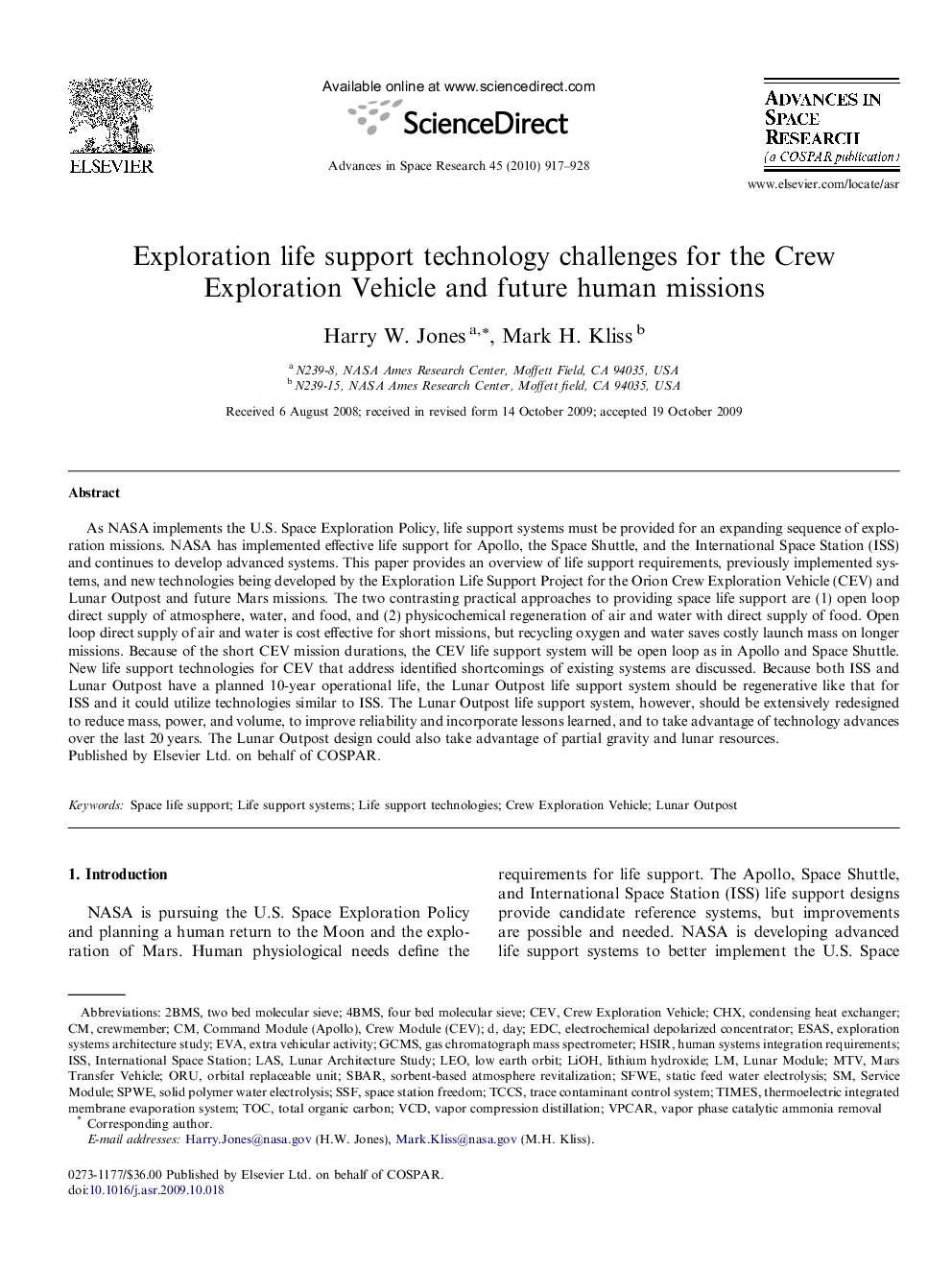| کد مقاله | کد نشریه | سال انتشار | مقاله انگلیسی | نسخه تمام متن |
|---|---|---|---|---|
| 1765824 | 1020121 | 2010 | 12 صفحه PDF | دانلود رایگان |

As NASA implements the U.S. Space Exploration Policy, life support systems must be provided for an expanding sequence of exploration missions. NASA has implemented effective life support for Apollo, the Space Shuttle, and the International Space Station (ISS) and continues to develop advanced systems. This paper provides an overview of life support requirements, previously implemented systems, and new technologies being developed by the Exploration Life Support Project for the Orion Crew Exploration Vehicle (CEV) and Lunar Outpost and future Mars missions. The two contrasting practical approaches to providing space life support are (1) open loop direct supply of atmosphere, water, and food, and (2) physicochemical regeneration of air and water with direct supply of food. Open loop direct supply of air and water is cost effective for short missions, but recycling oxygen and water saves costly launch mass on longer missions. Because of the short CEV mission durations, the CEV life support system will be open loop as in Apollo and Space Shuttle. New life support technologies for CEV that address identified shortcomings of existing systems are discussed. Because both ISS and Lunar Outpost have a planned 10-year operational life, the Lunar Outpost life support system should be regenerative like that for ISS and it could utilize technologies similar to ISS. The Lunar Outpost life support system, however, should be extensively redesigned to reduce mass, power, and volume, to improve reliability and incorporate lessons learned, and to take advantage of technology advances over the last 20 years. The Lunar Outpost design could also take advantage of partial gravity and lunar resources.
Journal: Advances in Space Research - Volume 45, Issue 7, 1 April 2010, Pages 917–928